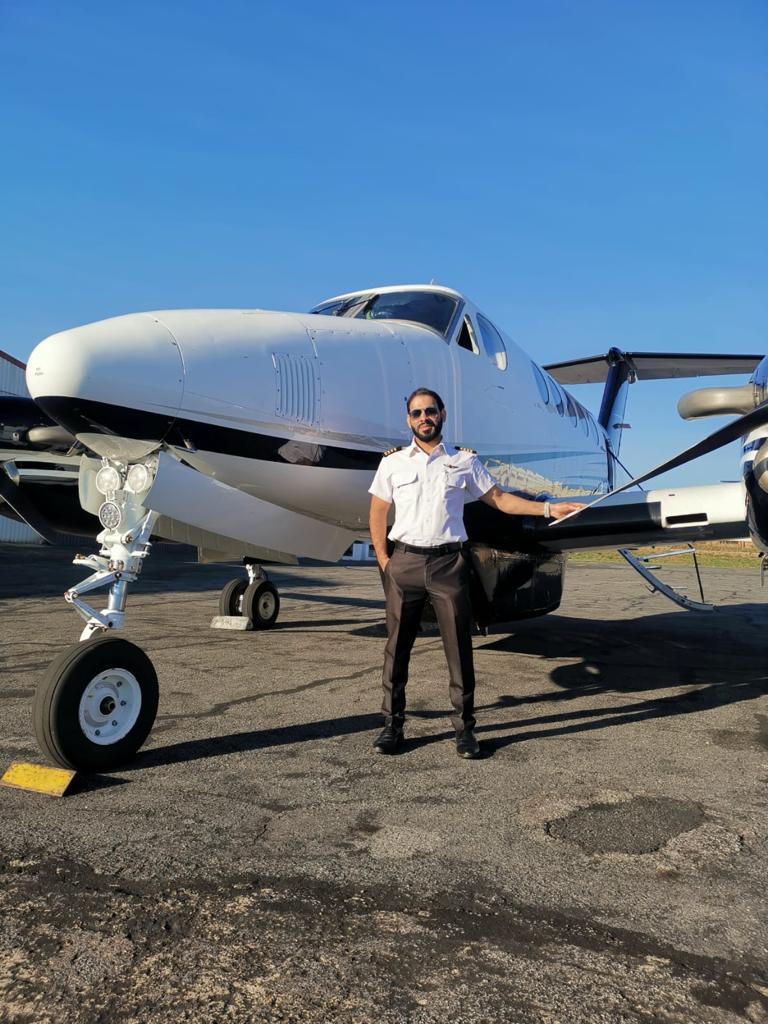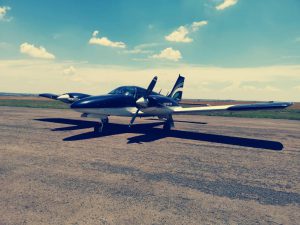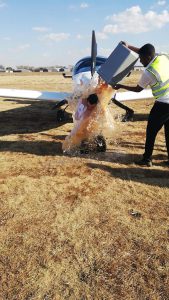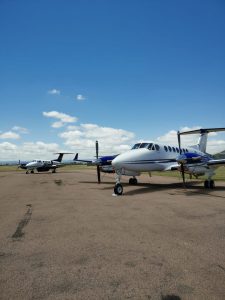Welcome to
Airmen Aviation
Our aim is to provide our clients with the highest standard of comprehensive training available, and assist you to reach your full potential whether you want to fly for pleasure with a Private Pilot's License, or to pursue a career in aviation.
Our Courses
PRIVATE PILOT LICENCE (PPL)
A valid SPL (medical examination (Class I or II) is required to be done by a qualified aviation medical doctor.
Private Pilot License is generally seen as a learner’s license in order to obtain a Commercial License. However, a PPL is also seen as a license for people who want to pursue aviation as a hobby.
This qualification allows you to be pilot in command in an aircraft and carry passengers during daytime and in clear weather conditions. A
PPL does not allow you to receive remuneration for your flying activities and is purely for pleasure private use.
i. You must be 16 years of age however, training may commence before this age.
ii. (Our youngest students at the moment are 14)
iii. A medical examination (Class I or II) must be done by a qualified aviation medical doctor.
iv. You must pass a technical examination of the aircraft chosen to train on, and a student pilot exam.
v. 2 passport size photos will be required.
vi. Pay the fee to issue the SPL. The South African Civil Aviation Authority (SA CAA) will allocate a License number which will enable you to fly an aircraft solo (on your own) while still under the supervision of your Instructor. Students who prove to be proficient enough after a minimum of 10 hours dual flying will be sent for the first time Solo. This is a truly memorable experience, which signifies your official entry into the prestigious group of Aviators.
i. You must hold a valid Student Pilot License.
ii. You will need to accumulate a minimum of 45 hours of flight training, of which: minimum 25 hours Dual flight instruction, minimum 15 hours Solo (this must include at least 5 hours solo cross-
iii. Successfully pass 8 online PPL examinations (pass mark 75%)
iv. Complete a English Language Proficiency Test (if required)
v. Pass a Restricted Radio License course.
vi. You must be minimum 17 years of age in order to take your 2 practical flight tests. The first being a General Flight Test (GFT) which will focus on your ability to handle the aircraft in any situation. The second test is a cross-
vii. Once you have accumulated the required flying hours in your logbook and passed all examinations and tests, all your training documentation will be checked and sent to the CAA. A fee must be paid for issuing the PPL and finally have your SPL upgraded to a PPL.
This qualification has the same privileges as a PPL with the added ability to fly during night times in reduced visibility. You will learn to utilize and rely on the instruments in the aircraft without being restricted when planning and executing a flight. Requirements for Night Rating (NR)
i. You must hold a valid Private Pilot License.
ii. You will need to complete 10 hours Dual Instrument Flying. At least 5 take-
iii. Successfully pass an online examination.
iv. Pass a practical night/IF flight test with a Grade II Instructor.
v. Once all requirements are met, all documentation is sent to the CAA and a fee must be paid in order to include the night rating onto your PPL License.
This advanced qualification can be added either on a Private Pilot License or Commercial Pilot License, and will enable you to fly in challenging weather conditions by solely relying on the flight instruments.
Requirements for Instrument Rating (IR)
i. You must hold a valid Private or Commercial Pilot License.
ii. Hold a Class I medical certificate.
iii. Have a valid Night Rating on your License. The 10 hours done during your Night Rating will be counted towards your Instrument Rating training.
iv. Pass a General Radio License exam
v. Successfully pass the online Instrument Rating examination (pass mark 75%).
vi. Complete 40 dual hours of Instrument flying time, of which 20 hours can be done on an approved simulator device.
vii. Pass a practical flight test with a Designated Flight Examiner.
viii. Have flown 50 hours cross country time as Pilot-

COMMERCIAL PILOT LICENCE
A Commercial Pilot License is required when pursuing a professional career in aviation.
This qualification allows you to receive remuneration for your flying activities and be pilot in command (on aircrafts certified for single pilot operations) or co-
- You must be 18 years of age.
- Hold a Class I medical certificate.
- Hold a valid PPL and Night Rating
- Pass a General Radio License exam.
- You will need to accumulate a minimum of 200 hours of flying, of which: 40 hours must be instrument flight training, 20 hours may be done on an approved simulator (10 hours already done through PPL and Night Rating courses). A minimum of 100 hours as pilot in command (PIC) is also required, of which at least 50 hours must be cross country flight time. The CPL course has an integrated Instrument Rating course which enables a pilot to fly by instrument referral only and can either be done on a Single Engine aircraft with variable pitch and retractable gear or on a Multi-
engine aircraft with variable pitch and retractable gear. - Successfully passing 8 Commercial Pilot examinations at CAA (pass mark 75%)
- Complete a CPL General Flight Test in an Advanced Type aircraft with a Designated Flight Examiner. The instrument flight test is usually combined with the CPL flight test in one flight.
- Once you have accumulated all required flying hours in your logbook, completed your instrument rating and passed all examinations and tests, all your training documentation will be checked and sent to the CAA. A fee must be paid for issuing your CPL License and finally have your PPL upgraded to a CPL.
Graduates that have just completed their CPL will normally choose to do an Instructors Rating in order to gain experience. This rating will allow you to work as a flight Instructor. This involves undergoing individual skills testing, evaluation and preparation.
Requirements for Instructor Rating
- You must hold a valid Commercial or Airline Transport Pilot License.
- Complete 20 hours of Flight Instructor Patter (Learning to teach on the right side of the cockpit while providing feedback to the student)
- Pass 2 theoretical online examinations.
- Do at least 80 hours of Flight Instruction Briefings and preparation, and compile your own personal Instructor file.
- You will then be recommended to do a combined theoretical and practical flight test with a Designated Flight Examiner.
- Once all requirements are met, all documentation is sent to the CAA and a fee must be paid in order to include the instructor rating in your License.

Airline TRANSPORT PILOT LICENCE
In order to operate as pilot in command on large commercial multi crew aircrafts an Airline Transport Pilot License (ATPL) must be completed.
This is the highest obtainable License in the aviation industry which enables you to become an Airline Captain.
- You must be 21 years of age.
- Successfully pass 6 online Airline Transport examinations at CAA.
- You will need to accumulate a minimum of 1500 hours of flying, out of which 250 must be as pilot in command (PIC), out of which 100 hours must be night flight time. A minimum of 75 hours Instrument flying is also required. This will need a considerable amount of time to acquire and is normally gained during your course of employment as a Commercial pilot. You must complete a practical flight test on a multi-
engine aircraft or a jet aircraft with a Designated Flight Examiner. You may write the ATPL examinations before you have 1500 hours and qualify for a “Frozen ATPL” until you meet the hour requirements. A Frozen ATPL is a CPL with the ATPL theory subjects passed.

Advance Courses
Multi Engine
PA 34 & DA 42
BEECHCRAFT
King Air B200 & KIng Air C90
Cessna
208 Caravan
Type Rating
Airbus 320 & Boeing 737

Our Services
- Book Air Ambulance.
- Charter Flights.
- Government Contracts.
- Survay.
- Destination Wedding.
Frequently Asked Questions
Full time students that fly on average 4 times a week may need 3 –
Free computer-
Before training commences students will be given a Pilot Starter kit which consists of: 6 PPL Books, Air Law book, Radio handbook, Trevor Thom Vol 1 book, Aircraft Checklist, E6b computer, Protractor, Nav ruler, Logbook, JHB Map, Pilot Bag & Headset. The 8 subjects are covered at Ground School Lectures and take place during weekends for your convenience.
Ground School Lectures are highly recommended since they enable students to get the best out of their training and advance at an accelerated rate in the long run. In addition, it is essential to apply the theory taught in these lectures with the practical flight training. The subjects are: Principles of Flight, Meteorology, Aircraft Technical and General, Human Performance and Limitations, Flight Planning & Performance, Navigation, Air law and Radio telephony.
Secure accommodation, fully furnished, self-
The aviation industry has always experienced a steady growth in both the private and public sector. Airline companies that want to expand their fleet and broaden their network, continuously search for first class trained pilots.
South African pilots have been rated among the top worldwide due to the high standard in aviation training and quality assurance systems being consistently set by the South African Civil Aviation Authority. Other options of employment may possibly be for charter flying, contract flying, corporate and cargo flying, agricultural flying, survey flying, film and photography flying and Instructor flying.
Graduates that have just completed their CPL will normally choose to do an Instructors Rating. This rating will allow you to work as a flight Instructor and build hours simultaneously. Airline companies usually require pilots with no less than 1000 hours of flying time and Charter companies with no less than 500 hours.
Foreign Pilot licenses can either be validated or converted irrespective of the country of issue; for private Hire & Fly use, continuation of pilot training or career advancement in South Africa.
Each validation or conversion case is assessed individually by the SACAA Licensing Department and can be contacted on 0027 11 545 1000 for more details. The following are a general guideline to convert a foreign license:
Pilot Licenses issued in South Africa are ICAO compliant and recognised worldwide. Licenses can either be validated for a certain period or converted all together, i.e. into FAA or EASA licenses. The exact requirements vary in each country and can be enquired at the Aviation Authority of the country you wish to fly in.
Rand airport is in close proximity to the General Flying Area and other major airports giving the student more flying time per lesson and as a result training being done more efficiently. It has four different runway directions to accommodate any wind conditions and access to navigational facilities.
It is a manned airport with air traffic control in a controlled airspace allowing for radio and other procedures being practiced properly. In addition, it is less congested with no time delays unlike other busy airports.
Great weather conditions all year round in a friendly atmosphere and clear spectator viewing for family and friends from the Airport restaurant Cafe.






